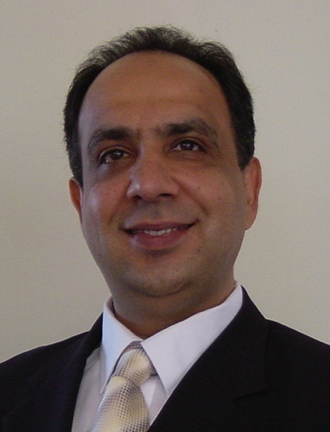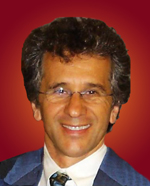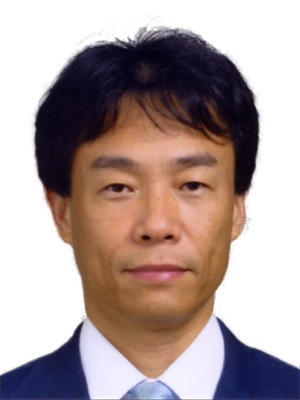
Nei Kato (IEEE Fellow/IEEE Distinguished
Lecturer)
Professor, Tohoku University, Japan
Title: Recent Trends in Ad hoc, Sensor, and Mesh Networks: From
Fundamental to Specialized Disaster-Resilient Applications
Time:
16:00-18:00,
Monday, Jan. 28, 2013
Abstract:
This presentation addresses the recent trends and future directions of the
wireless ad hoc, sensor, and mesh networking technologies. The presentation
starts with a survey of the background and major principles of the key
characteristics of the ad hoc, sensor, and mesh networks that include
communication protocols, routing strategies, and security issues. The
contemporary applications of ad hoc networking in mobile and vehicular
communication, the relevant sensor network applications for surveillance,
monitoring, and data collection, and the issues involving the use of multi-hop
Internet access through mesh networks are also presented. Then, specific trends
and challenges of ad hoc, sensor, and mesh networks are highlighted from both
academic and commercial perspectives. Several interesting case studies are also
used to briefly demonstrate the recent trends in addressing some of the
challenges. We highlight how these trends may converge or diverge from the
fundamental communication context to wider, more specialized scopes. In
particular, through my experience as co-PI in the national project in Japan, in
collaboration with telecom-giants such as NTT and Fujitsu, a unique
disaster-resilient communication network architecture, facilitated by deploying
resource unit vehicles and quickly setting up the networks using these diverse
ad hoc and mesh technologies is presented, and the forthcoming challenges are
also identified. In addition, the presentation offers future directions to set
the stage for a successful development of ad hoc, sensor, and mesh networking
technologies for facilitating next-generation communication.
Biography:
Nei Kato received his Bachelor Degree from Polytechnic University, Japan in
1986, M.S. and Ph.D. Degrees in information engineering from Tohoku University,
Japan, in 1988 and 1991, respectively. He joined Computer Center of Tohoku
University at 1991, and has been a full professor with the Graduate School of
Information Sciences since 2003. He has been engaged in research on satellite
communications, computer networking, wireless mobile communications, smart grid,
image processing and neural networks. He has published more than 300 papers in
peer-reviewed journals and conference proceedings. He currently serves as the
Chair of IEEE Satellite and Space Communications Technical Committee, the Vice
Chair of IEEE Ad Hoc & Sensor Networks Technical Committee, the Chair of IEEE
ComSoc Sendai Chapter, a technical editor of IEEE Wireless
Communications(2006~), an editor of IEEE Transactions on Wireless
Communications(2008~), an associate editor of IEEE Transactions on Vehicular
Technology(2010~), an editor of IEEE Trans. on Parallel and Distributed Systems,
a co-guest-editor of several Special Issues of IEEE Wireless Communications
Magazine. He has served as a symposium co-chair of GLOBECOM’07, ICC’10, ICC’11,
ICC’12, Vice Chair of IEEE WCNC’10, WCNC’11, ChinaCom’08, ChinaCom’09, Symposia
co-chair of GLOBECOM’12, and workshop co-chair of VTC2010. His awards include
Minoru Ishida Foundation Research Encouragement Prize(2003), Distinguished
Contributions to Satellite Communications Award from the IEEE Communications
Society, Satellite and Space Communications Technical Committee(2005), the FUNAI
information Science Award(2007), the TELCOM System Technology Award from
Foundation for Electrical Communications Diffusion(2008), the IEICE Network
System Research Award(2009), the KDDI Foundation Excellent Research Award(2012),
IEEE GLOBECOM Best Paper Award(twice), IEEE WCNC Best Paper Award, and IEICE
Communications Society Best Paper Award(2012). Besides his academic activities,
he also serves on the expert committee of Telecommunications Council, Ministry
of Internal Affairs and Communications, and as the chairperson of ITU-R SG4 and
SG7, Japan. Nei Kato is a Distinguished Lecturer of IEEE Communications
Society(2012-213) and the co-PI of A3 Foresight Program(2011-2014) funded by
Japan Society for the Promotion of Sciences(JSPS), NSFC of China, and NRF of
Korea.
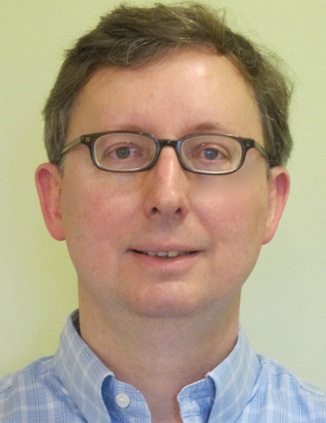
Charles Elkan
Professor, University of California, San Diego, USA
Title: One New Algorithm for Ten New Applications
Time:
10:00-12:00,
Tuesday, Jan. 29, 2013
Abstract:
Many phenomena are represented naturally as networks or as two-dimensional
tables. Often some network edges or some table entries are unknown. In this talk
I will describe ten different important applied problems of this nature. The
applications come from e-commerce, political science, biology, education, and
more. Then I will present a general method for learning from known nodes, edges,
and labels in a graph, or from known table entries, to predict values for the
unknown similar information. The new method induces latent features to represent
implicit properties of entities, and combines the latent features with any
available explicit features to make accurate predictions. The method is an
extension and combination of matrix factorization and a log-linear model. For
link prediction in networks, the new method achieves state of the art accuracy
over a wider range of datasets than any previous method. (Joint work with Aditya
Menon.)
Biography:
Dr. Charles Elkan is a professor in the Department of Computer Science and
Engineering at the University of California, San Diego. In 1998/99 he was a
visiting associate professor at Harvard University. Dr. Elkan is known for his
research in machine learning, data mining, and computational biology. In
particular, the MEME algorithm he developed with his Ph.D. student Tim Bailey
has been used in over 2000 published research projects in biology. Dr. Elkan has
won several best paper awards and data mining contests, and some of his graduate
students have become leaders at companies including Google, Yahoo, Zillow, and
IBM, while others have held faculty positions at Columbia University, the
University of Washington, and other universities inside and outside the U.S.
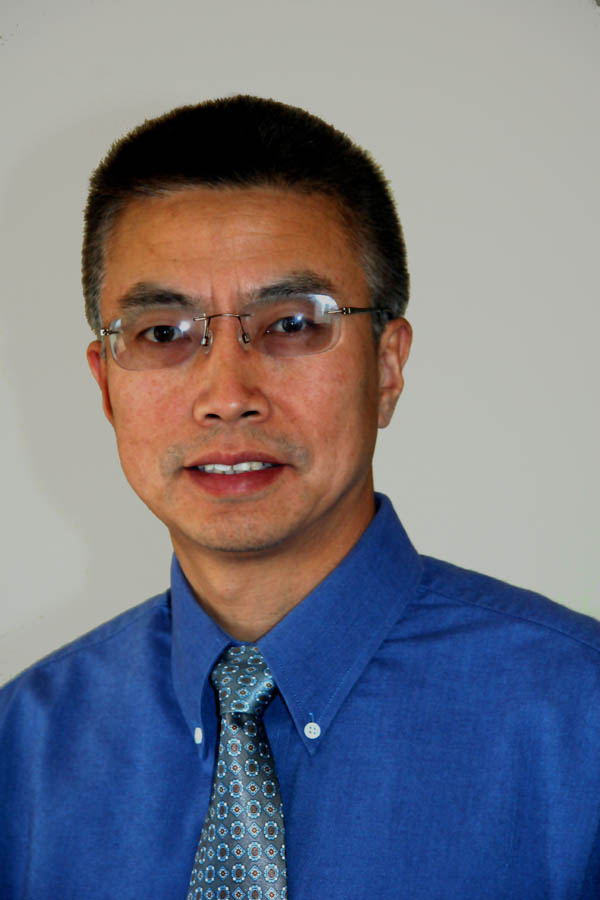
Yongbin Wei
Director, Qualcomm, USA
Title: Emerging topics in LTE-Advanced Networks
Time:
10:00-12:00,
Wednesday, Jan. 30, 2013
Abstract:
LTE is one of the
leading global solutions for wireless broadband access that has been
deployed rapidly across all continents. To evolve LTE technologies further
on system capacity, data rate, user experience, and deployment flexibility,
3GPP has been developing many improvements of LTE under the framework of LTE-advanced,
such as heterogeneous network (HetNets), carrier aggregation, advanced MIMO,
improved local access, and so on. In this talk, we will provide an overview
of these emerging technologies, associated benefits and technical
challenges, and performance.
Biography:
Yongbin Wei is a Director of Engineering with Qualcomm Incorporated, where
he has been working on LTE and LTE-advanced since 2006, including system
design, standardization, and implementation. Prior to that, he was involved
in the system design and international standardization of cdma2000 Rev. C
and Rev. D. and the product development. He received his Bachelor and
Master degrees from Univ. of Science and Technology of China, and Ph.D.
degree from Purdue University, all in Electrical Engineering. He holds 65 US
issued patents.
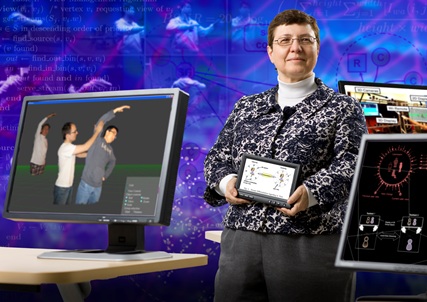
Klara Nahrstedt (IEEE Fellow)
Professor, University of Illinois, Urbana-Champaign, USA
Title: Characterizing and Leveraging People Movement in Mobile Networks
Time:
10:00-12:00,
Thursday, Jan. 31, 2013
Abstract:
We are witnessing an explosion of mobile devices such as mobile phones and their
connectivity over diverse wireless networks. Mobile phones became the
ubiquitous “everyday, everywhere” devices allowing users to stay connected via
voice, data, and video. Current smart phones are also equipped with many
sensors that allow researchers, corporations, and other organizations to
determine contextual information such as the locations of people, to
characterize the mobility patterns of groups of people, and to determine how
long individuals stay in one place and with whom they are meeting with. One can
ask: How is such information gathered? How can giving access to our movements to
third parties be utilized for good and/or bad in mobile networks?
In this tutorial we will discuss
characterization of people movement of certain user groups, what information
smart phones allow us to collect, how sensory data, using participatory sensing,
can be captured and analyzed to determine people’s movements, and discuss the
‘good’ and ‘bad’ leverage this people movement knowledge can give rise to in
mobile networks.
Biography:
Klara Nahrstedt is a professor at the University of Illinois at
Urbana-Champaign, Computer Science Department. Her research interests are
directed towards pervasive multimedia applications, mobile systems and networks,
and Quality of Service (QoS) management in wired and wireless networks. She is
the recipient of the IEEE Communication Society Leonard Abraham Award, the
University Scholar Award, the Humboldt Research Award, the Ralph and Catherine
Fisher Professorship Chair, and the IEEE Technical Achievement Award. She has
been a TPC member and the chair of many IEEE and ACM conferences, including the
general chair of IEEE Pervasive Computing and Communications (Percom) 2009, and
she is currently the elected chair of ACM Special Interest Group in Multimedia.
Klara Nahrstedt received her diploma degree in mathematics from Humboldt
University, Berlin, in 1985. She was a research scientist in the Institute for
Informatik in Berlin until 1989. In 1995 she received her PhD from the
University of Pennsylvania in the Department of Computer and Information
Science. She is the IEEE Fellow and ACM member.
![]()
![]()
![]()
![]()
